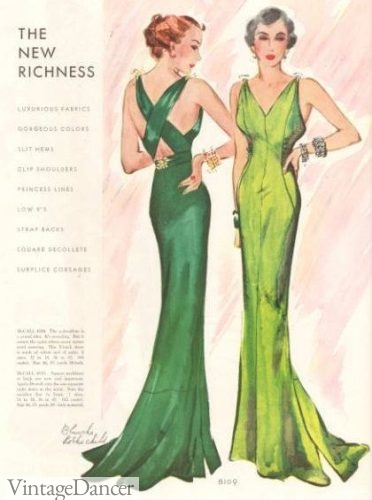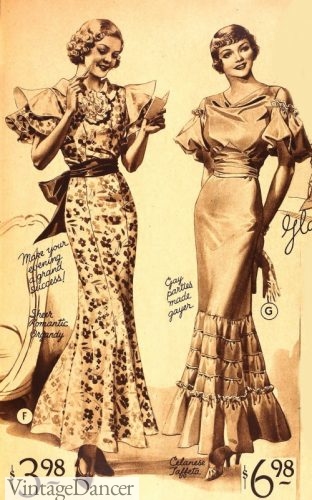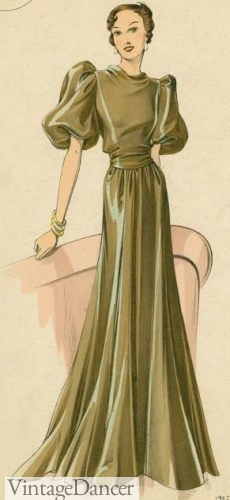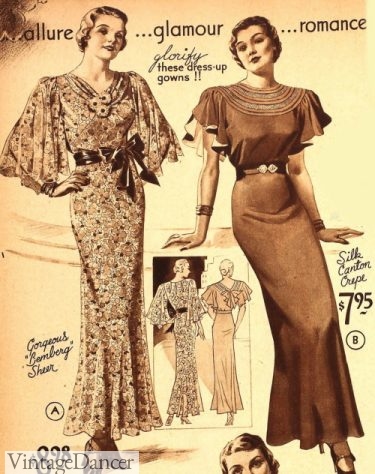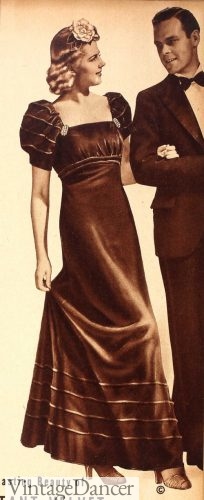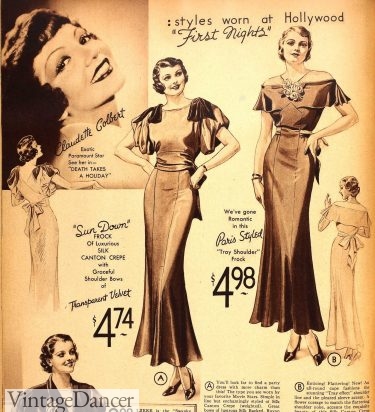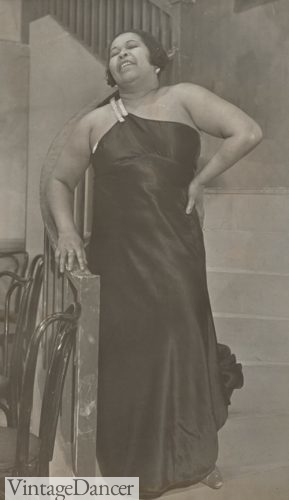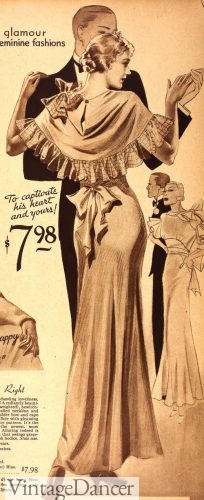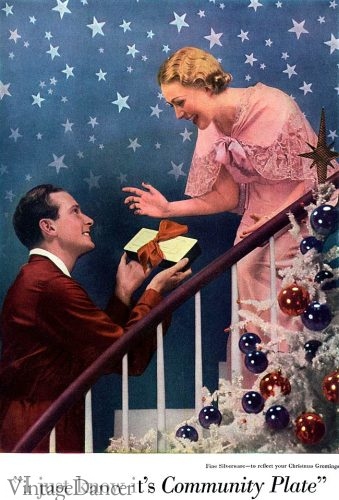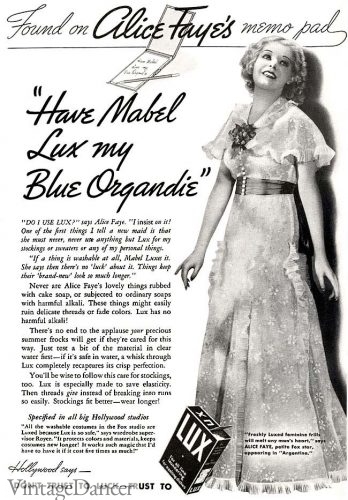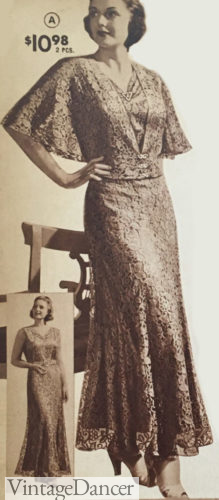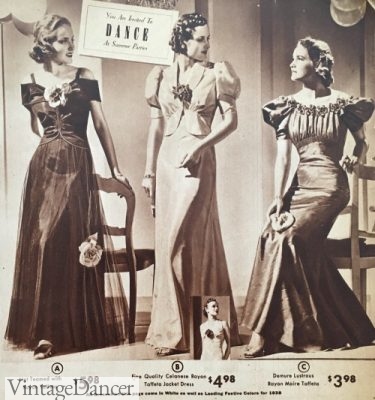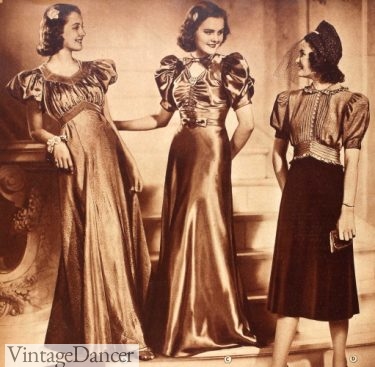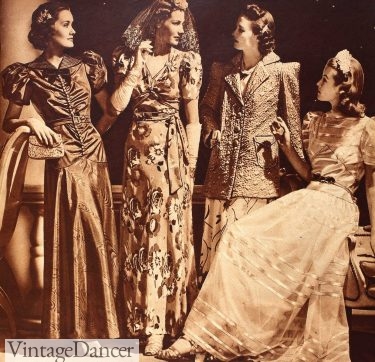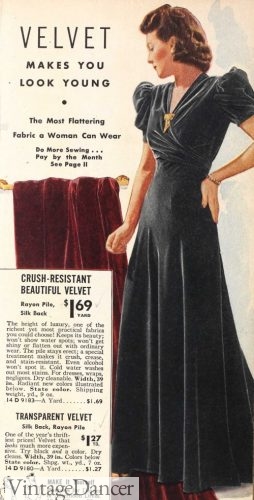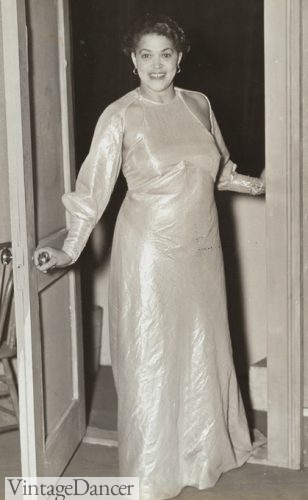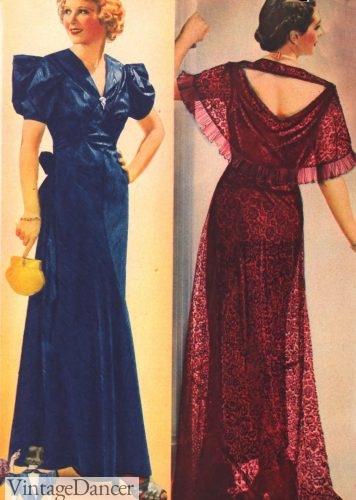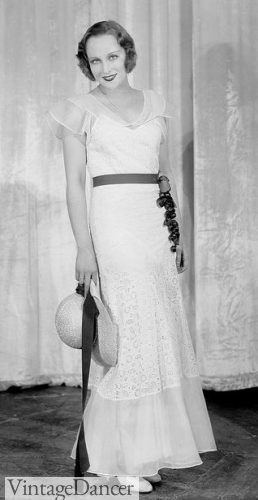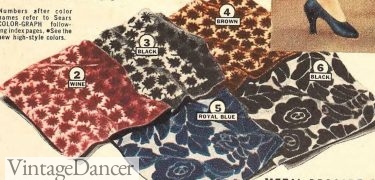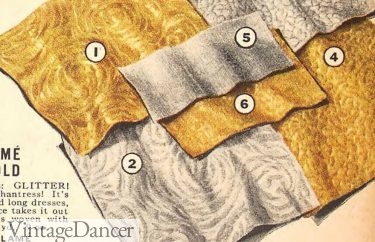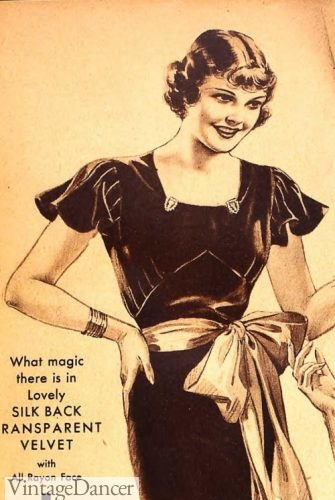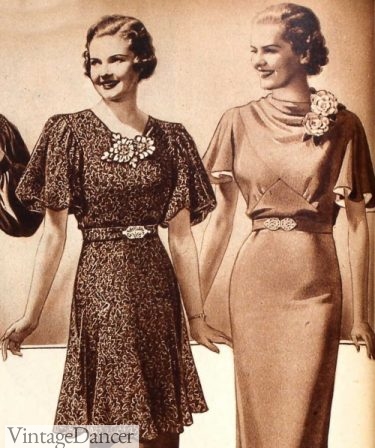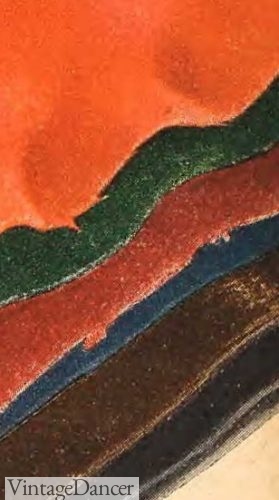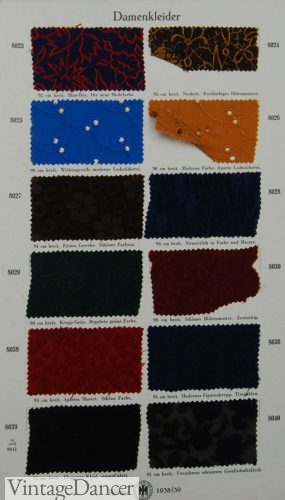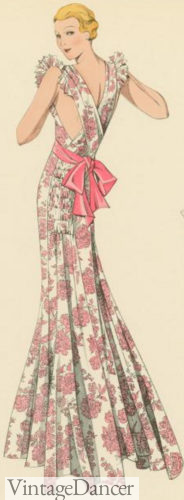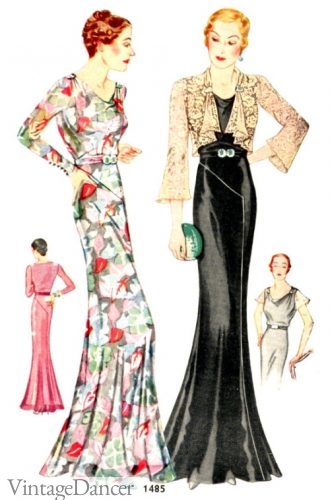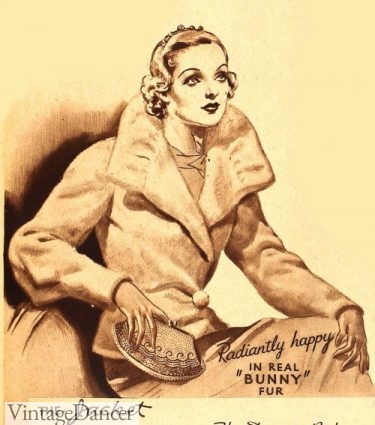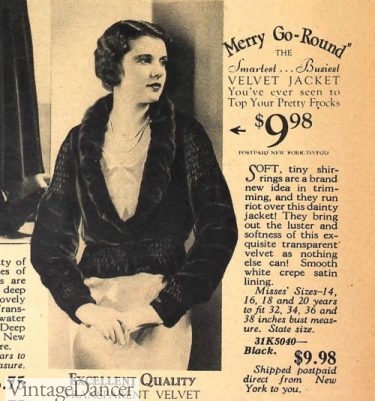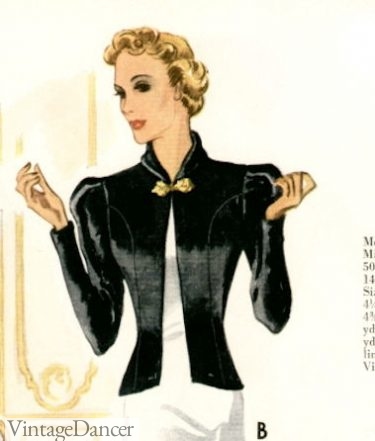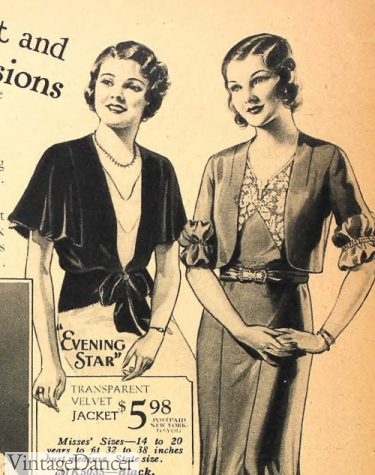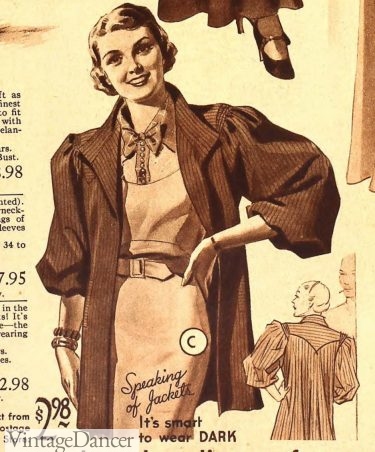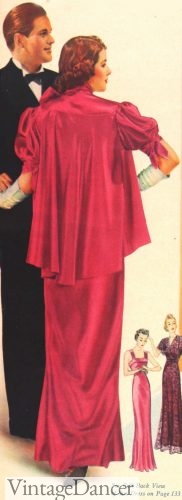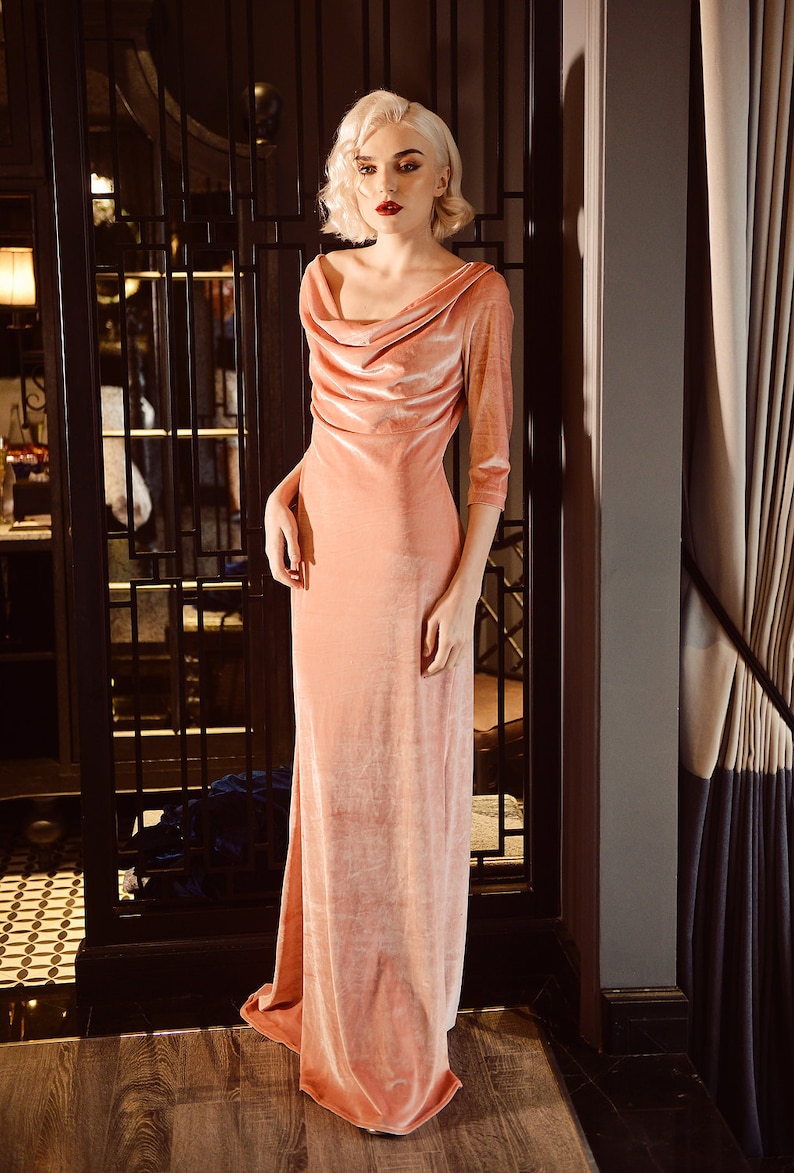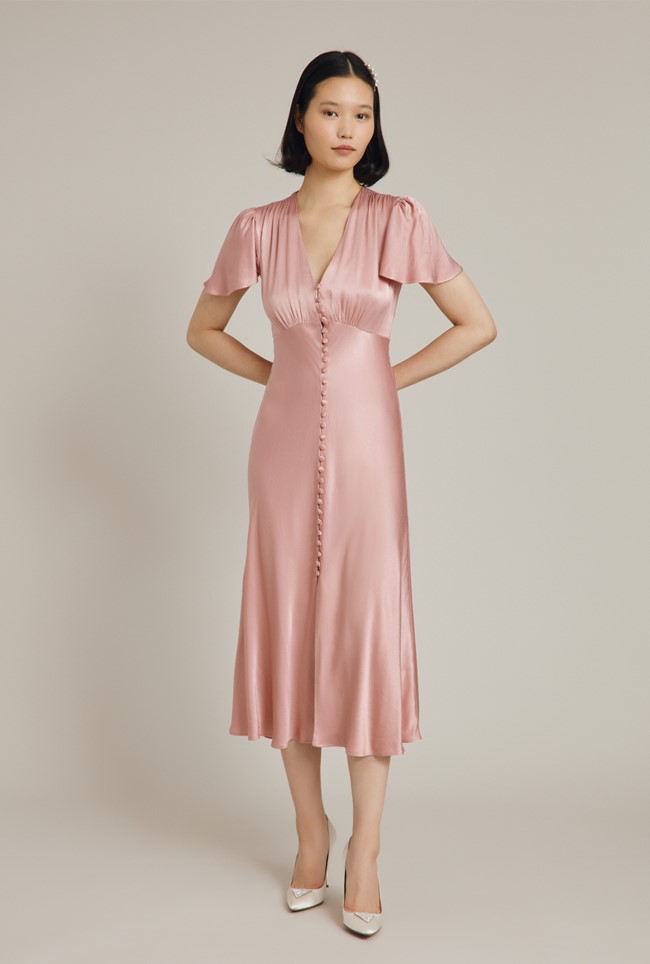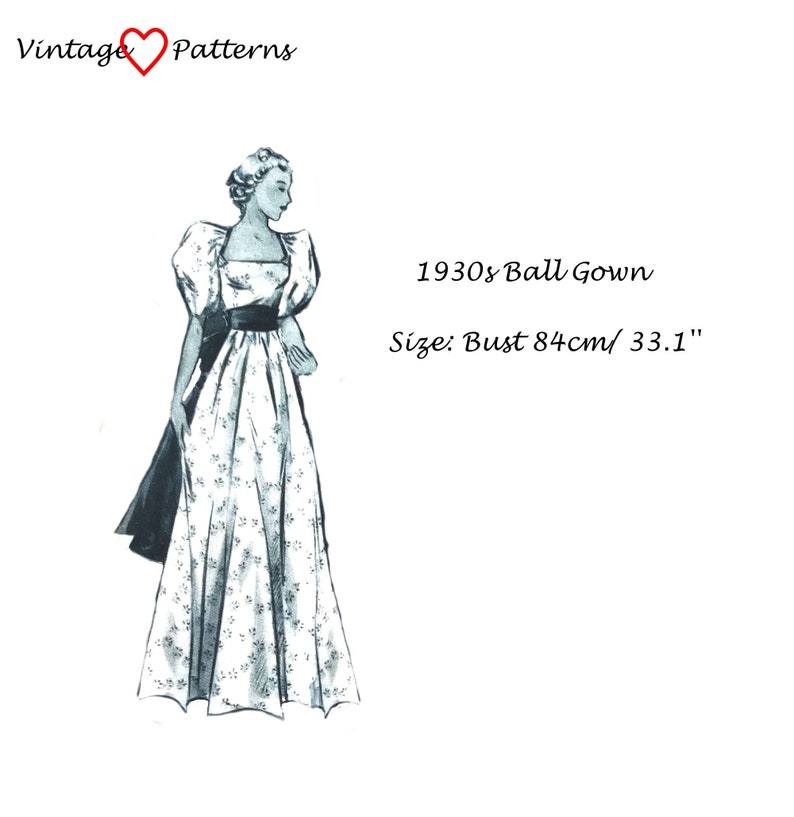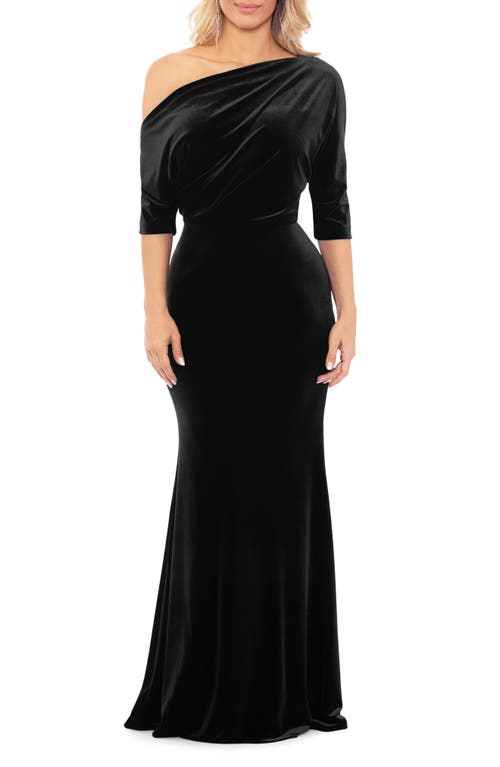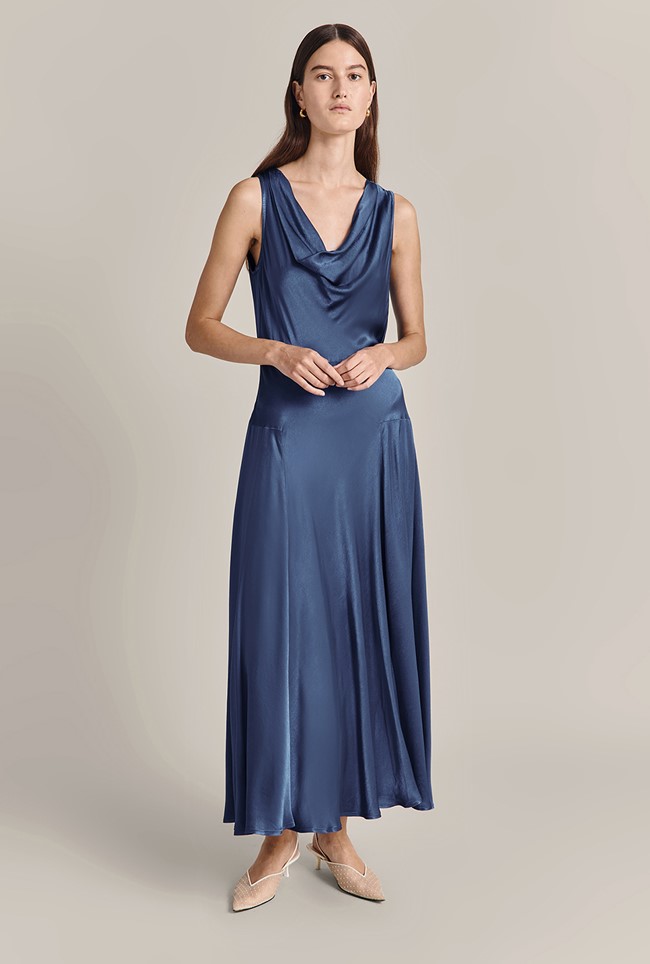Vintage 1930s evening dresses, cocktail dresses, formal gowns, prom dresses, and party dresses were all long, sleek, and sexy. The bias cut design hugged every curve of the body, creating the ultimate feminine silhouette. Long trains followed behind many gowns with capes, fur wraps, and exaggerated sleeves dripping from the shoulders.
Skirt were tapered in at the knee and flared out at the hemline. Bias cut pieces were sewn together in Art Deco inspired shapes, blending art and fashion together. By the the end of the decade however, the A-line ballgown skirt replaced the bias cut.
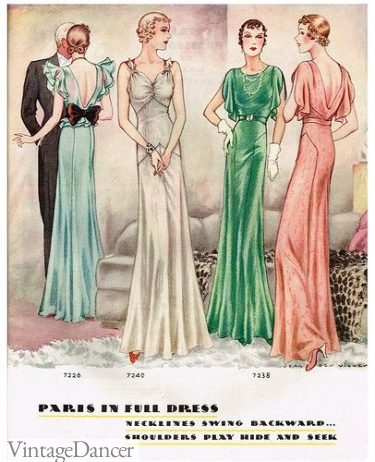
1930s evening gowns- modest front, backless backs
The Grecian inspired look took center stage in the early 1930s. Fabric was draped in folds like those on statues of Greek goddess. Tubes of fabric were rolled and then looped all over the neck, arms, and torso in one continuous band. The placement of the loops could change with each wearing. Long draping cascaded down one side of the hip or across the torso.
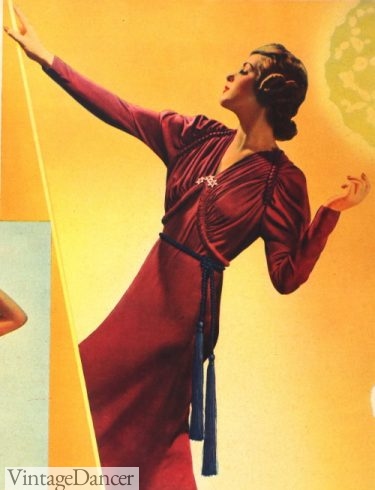
1937 Grecian wrap bodice with robe tassel belt
Open backs were a signature style of the thirties formal dress. They were modest in the front but exposed bare skin at the back, down to the waist on the most revealing models. Fussy trim and embellishment along the back openings called even more attention to women from behind. Designer Jean Patou created the halter top gown with open back in 1933, instantly becoming an Old Hollywood classic. Specialty built in bras and boned bodices helped hold things in place without disrupting the style lines.
- 1937 narrow staps and backless
- Cross back gown
Narrow shoulder straps were an alternative to the halter neck. They too could expose the back in V or U shapes. A bow, sash, cluster of flowers, or fabric draping began where the open back ended, cascading to the knee or further down to the floor.
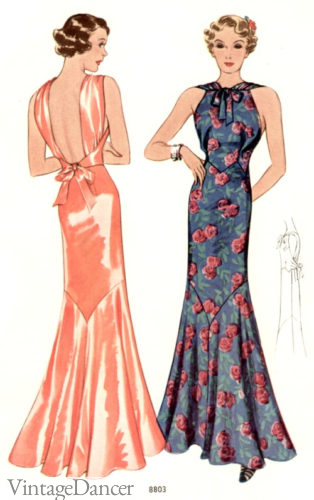
Halter neck backless Evening gown peach satin or floral
By the mid 1930s, exaggerated sleeves were the latest eye-catching design. Sleeve style included the puffy leg o’ mutton revival, pagoda sleeves with peaked shoulders, balloon sleeve, shirt puff sleeve, and dolman or batwing sleeves (sometimes called flutter sleeves today).
- 1934 puffy leg-o-mutton sleeves
- 1937 balloon sleeves
- 1934 batwing sleeves and short flutter sleeves
- 1938 puffed sleeves
A brief trend for a strapless dress style called a “tray shoulder” dress with thin halter neck spaghetti straps was seen around 1933. Many sleeves came detachable so a woman could take them off and wear only a thin strap on her shoulders, much easier for dancing! Some designers experiments with one shoulder strap, but it never went mainstream.
- 1933 bow puff sleeves and “tray shoulder” sleeveless gowns
- 1937 Frances Smith, blues singer, performs in a one shoulder gown
Capes became popular evening dress separates in the mid thirties. They were made in matching materials, usually lace or sheer fabrics, circling the shoulders and attaching to the front with a bow or flower clip. The cape jacket with dolman sleeves followed a few years later.
- 1934 ruffled edge detachable cape
- 1934 pink lace edge cape
- 1935 white ruffled sheer cape
- 1938 Lace Evening Dress in Peach with jacket (plus size)
At the very end of the 1930s, the two piece party dress and top or dress and jacket became the latest style. The skirt was a full ballgown style or long A-line while the top could be a ruched short sleeved blouse or short sleeved jacket. The two pieces could match but were often different, with taffeta or velvet for one of the pieces. This style would continued into the 1940s, later becoming a popular “hostess dress” ensemble.
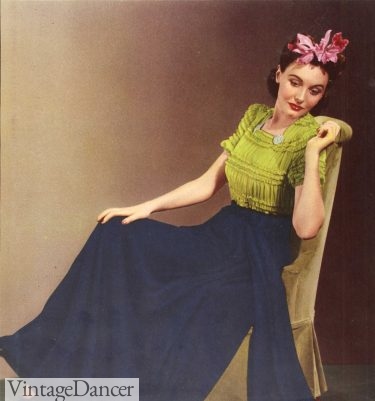
1939 two piece evening dress of long skirt and ruched top
The late 30s ballgown was also leading the way into a new era of 1940s eveningwear. With a fuller skirt, puffy short sleeves, ruching across the bodice, empire waists, and buttons on the bodice that resembled jackets, the new look was elegant but much more serious than the feminine thirties.
- 1938 ballgowns and jacket dress
- 1938 teen prom dresses with puff sleeves
- 1938 ruched, floral and ribbon gossamer ballgowns
- 1939 velvet puff sleeve gown
1930s Formal Dress Fabrics
Heavy crepes in silk or rayon as well as dull satin were the best materials for draping on the body. Gold or Silver lamé was also popular, although difficult for designers to work with. Among the crepes, canton crepe, Celanese crepe, and flat crepe were the most practical for ready-made and home-sewn dresses.
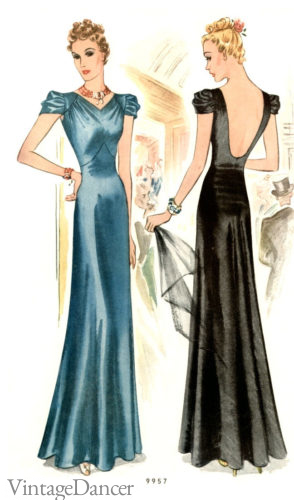
Simple evening gowns of silk or rayon crepe
Cotton was used on many gowns for the economically strapped population. Although not as pretty or drapey, floral prints trimmed in ruffles and lace could look quite beautiful.
Velvet was an excellent draping fabric for winter weight gowns while “transparent velvet,” backed in silk, was light enough for all seasons.
Chiffon was used again in the 1930s, especially on the later ballgown styles. The huge circle of chiffon fabric that created the skirt swayed to a dancers every step. Rayon taffeta was also a good late 30s ballgown dress fabric. Bright shiny fabrics made dresses appear bigger than they actually were.
- 1937 Dorothy Paul, Cabaret Entertainer, wears a Lamé Gown
- Beautiful lace gown with feather ruff
- Blue taffeta and wine red lace
- 1931 lace and chiffon gown
Sheer nets, gossamer, flocked nets, and other light and airy fabrics that held shape were also used in the early and late 1930s. Lace was used both for the full dress and for sleeves, capes, and trim. My favorite ’30s gown in my collection is a peach lace dress with matching jacket.
- 1938 flocked velvet brocade
- 1938 gold and silver lame
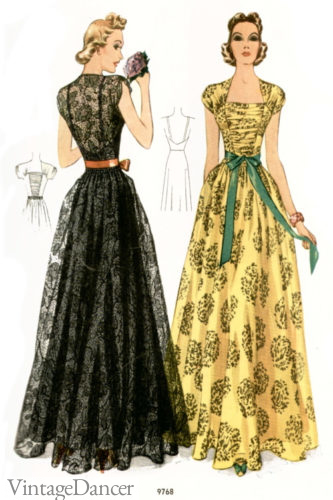
1939 flocked net ruched top ballgowns
Many dresses were decorated with small groups of beaded flowers or rhinestones around the neckline. Dress clips accented some tops as well as rhinestone buckle belts. Floral corsages also added some decoration to plain dresses. However for the most part, 1930s evening gowns used rich fabrics and artistic design to create an era of simple elegance without added bling.
- 1933 rhinestone dress clips on the neckline and a big bow sash
- 1936 floral corsages and paste belt buckles add decoration
Colors
The three essential colors of 1930s evening wear were black, white, and wine red. However, trends also introduced shades of blue: Bright navy blue, royal blue, peacock blue, lido aqua, and emerald green. Shades of red and pink included wine, mulberry, petal rose, coral rose, light pink, violet, peach, and even orange.
- 1938 velvet colors
- 1938 evening dress swatches
Floral prints were on trend in the early 1930s. They were mostly pastel colors on a white ground in summer, and floral on a dark ground in fall.
- 1934 floral dress with bow
- White floral gown and black satin with lace jacket
1930s Evening Jackets
Caring shawls, wraps, and furs added to the elegance of 1930s evening gowns. Wealthier women draped one or two silver or white fox furs over their shoulders and arms. Fur wrap jackets were also a warm and luxurious accessory. When made of white rabbit fur, these were often called “bunny jackets.”
More practical jackets were the bolero, “mess jacket,” poplin jacket, velvet jacket, and ruffled shrug.
- 1934 “bunny jacket” in white
- 1932 velvet evening jacket
- Velvet fitted jackets
- 1932 wrap style jacket and bolero crop
- 1934 day or evening pique jacket
- 1937 cape style jacket
Some women carried large, brightly colored chiffon handkerchiefs for no reason other than to add a pop of color.
Learn more about jewelry, hairstyles, shoes, gloves to complete the formal outfit.
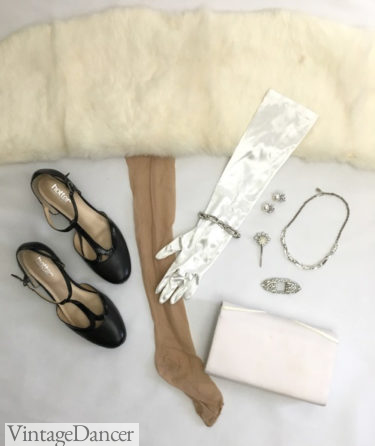
1930s accessories for a formal look
Shop 1930s Style Evenings Gowns
Many modern day evening gowns are based on the 1930s silhouette. Cape dresses, flutter sleeves, fitted satin gowns, and bias cut slip dresses are just a few of the choices.
Debbie Sessions has been teaching fashion history and helping people dress for vintage themed events since 2009. She has turned a hobby into VintageDancer.com with hundreds of well researched articles and hand picked links to vintage inspired clothing online. She aims to make dressing accurately (or not) an affordable option for all. Oh, and she dances too.

